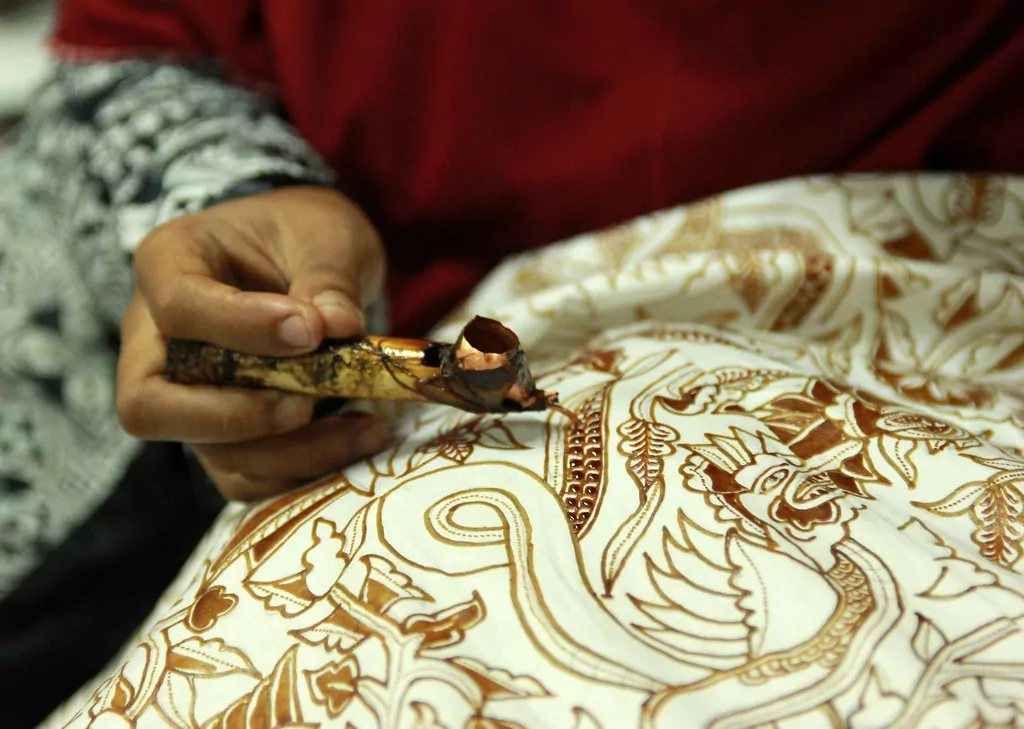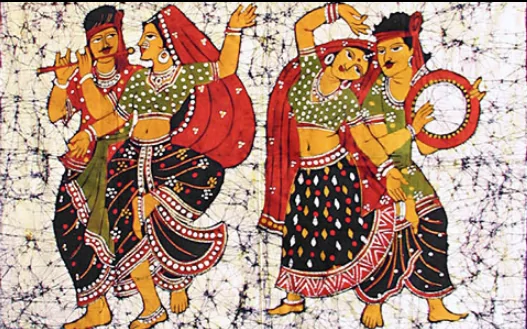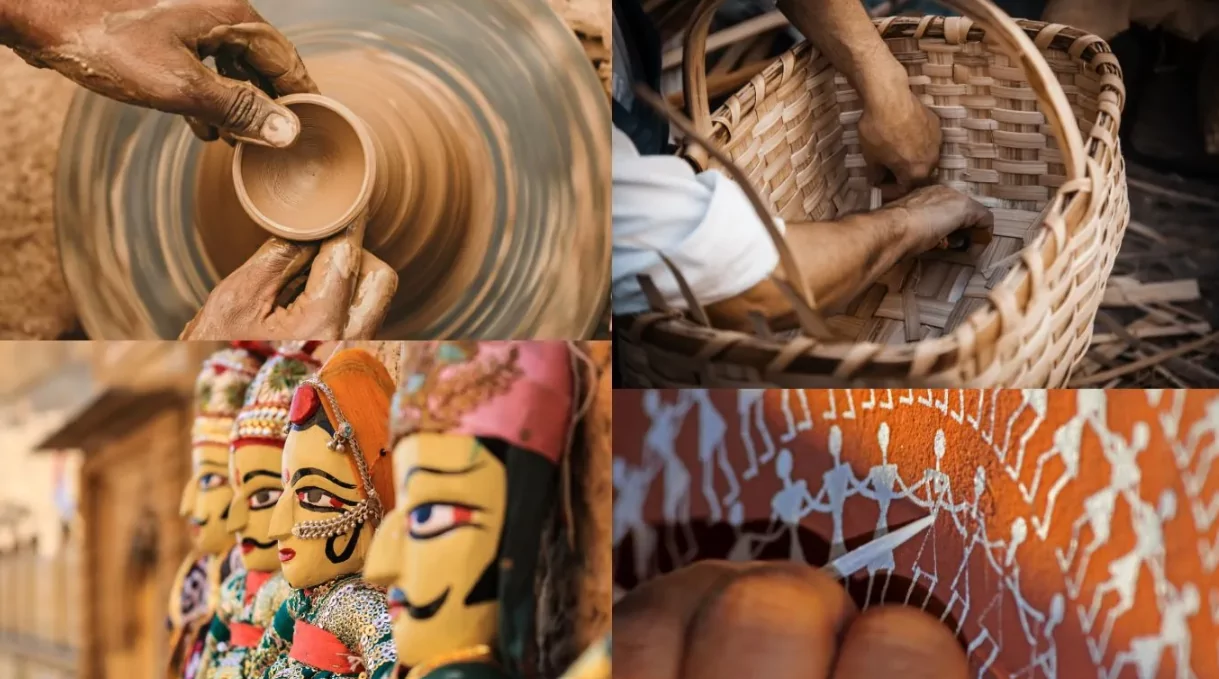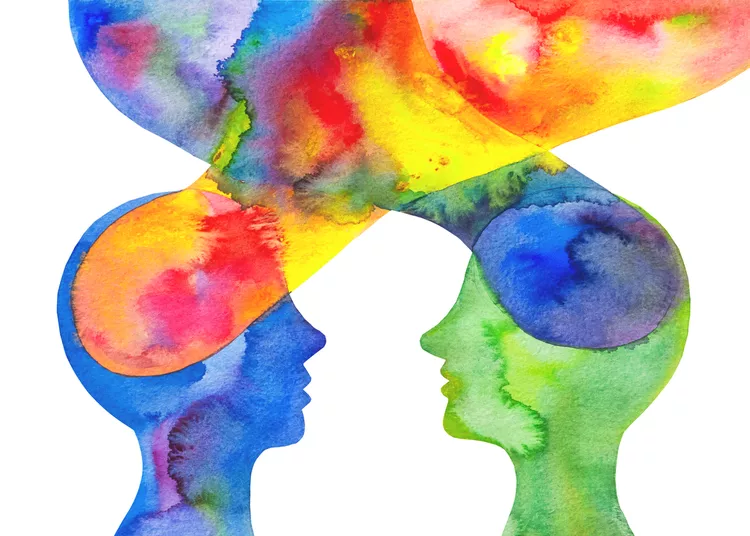Batik, a unique and splendid art form transforms a simple piece of fabric into a bright and vividly colourful assortment of wonderful designs and patterns. An ancient wax-resist dyeing technique that is believed to originate in Indonesia, batik has over the years spread and etched a place for itself across the world. Though a handicraft, the arrival of batik printing in India is fraught with historical, social and cultural significance. From its journey over the silk route to being depicted in frescoes at Ajanta Ellora to flourishing in small villages of Gujarat to being rediscovered by Rabindranath Tagore – today batik is a well-known fabric artistry with various practical usage and applications. But it also carries a rich legacy of Indian sensibilities, traditions and heritage that have defined and helped to evolve batik into a recognized and much-loved art expression.
What is Batik?

The word itself comes from the Javanese word ‘ambatik’ meaning to write and ‘tik’ meaning dot. On the other hand, ‘’batikhan’ means to write or draw in Javanese. Batik art is primarily created on fabrics ranging from cotton, rayon, linen, silk and more. But its technique or print can also be made on wood, paper, leather, ceramic etc.
Batik or batik printing essentially implies making lines and dots of wax-resist dye using a tool called canting (hand drawn) or a copper stamp known as a cap (block print). The selected surface or designs are thus blocked by the wax and the entire cloth is then soaked in a colour and the wax later removed with boiling water. To create intricate designs, patterns and add more colours, this process of waxing, dyeing and then removing the wax is repeated several times.
The contemporary and modern way of creating batik prints has evolved with several advanced techniques of applying wax and dye. Some of these include etching, cracking, spraying, marbling, discharging and others. Also, a wide range of tools are used today, such as pencils, stamps, brushes, copper and more.
The most common designs and motifs on batik fabrics are flowers, leaves, geometric designs and more. However, artists have complete freedom of expression to create any type of design or pattern. Batik fabric and prints are used on a wide range of products, such as clothing, accessories, book covers, bags, wall hangings, furnishings, upholstery, tablecloths and other household items.
History of batik

There is no clear evidence of the exact time and place of origin of batik. However, the earliest records and findings suggest that batik was practised as early as nearly 2000 years ago in China, India, Turkey, the Middle East, Peru, Egypt, Japan and Europe. Each of these areas could possibly have developed batik on their own, but the probability of it spreading through trade routes is much higher. Also, batik reached its highest form of expression in Southeast Asia and Indonesia is often known as the ‘cradle’ where this art form grew.
In India the earliest evidence of batik can be found in the murals and frescos of the Ajanta and Ellora caves where figurines are painted wearing fabrics that look like they have batik prints on them. Originally, the Khatri community in Gujarat were the only artisans who practised this art form. But over the years, batik spread to many other states of India, such as Madhya Pradesh, West Bengal, Tamil Nadu etc.
Batik printing in India
Gujarat

Batik, initially was practised by the Khatri community in Gujarat, who were also pioneering masters at ajrakh blocks and bandhini prints. Mundra and Bhujpur were the main regional centres where batik flourished. The strategic location of the Mundra port which served as an excellent stopover for trade routes from Egypt and Arab is also attributed to the growth of batik printing and arts. Batik became such an integral part of the Gujarat culture that the fabric became a part of their daily clothing and accessories. The ‘odhna’ or dupatta that women wore flaunted the Bairaj print, Fulkiya print, Chonia print and Singh Champa print. Salwaars with batik prints, as well as the mediya rumaal or batik-printed turbans for men, became and continue to be the region’s traditional attire.
Today Mundra and Mandvi in the Kutch district are known worldwide for their authentic and mesmerizing batik productions and designs.
Shantiniketan

Interestingly, batik lost some of its charm and popularity, until the early 20th century when it was revived by Rabindranath Tagore. Tagore visited Java in 1927 and was highly impressed with the batik art there. He was fascinated with the 2.5m skirts called kain panjang that were worn by the girls dancing in the royal court. In fact, he brought back with him a few batik cloth pieces to India along with a piece that was gifted to him by the King of Java.
During his visit, he was accompanied by Surendranath Kar who learnt the batik technique on the trip and helped establish it as an important discipline at the Visva Bharti University at Shantiniketan.
The batik printing technique practised in Shantiniketan is also known as Tuli Batik. It is slightly different from Javanese Batik as it uses tuli or a brush instead of the spouted tool called canting.
From Shantiniketan batik slowly and steadily spread to other parts of West Bengal and was primarily done on fabric and leather.
Batik was then taught in Kala Bhavan and Shilpa Bhavan and reached its pinnacle under Gauri Bhanja the daughter of renowned artist Nandalal Bose. It is also poignant to note that women have had a far more influential role in shaping batik history and art in India than men. The women artists of Shantiniketan are credited largely for contributing to the growth of batik in India. Some of the prominent women batik artists were Ila Ghosh, Jamuna Sen, Haimanti Chakravarty, Rani Chanda, Arundhati Thakur, Indusudha Ghosh and more.
Batik techniques at Shantiniketan comprise motifs and several designs. However, various designs bear resemblance to Alpana or the beautiful floor art that is practised in Bengal. Again, it is the women who primarily draw alpanas and Shantiniketan batik designs thus developed a unique style which reflected the region’s culture and traditions. The other common motifs of batik design included the conch, marigold, fish, peacock, geometric patterns, hibiscus etc.
The batik prints are today an integral part of costumes worn during performances and cultural events at Shantiniketan. Besides, the tribal women of the town are also involved in practicing this art in small scale and various cottage industries.
Cholamandal Artists Village – Injambakkam

In 1966 the Cholamandal Artists Village was established in Injambakkam in Chennai, Tamil Nadu. This artistic community was founded by KCS Paniker who along with students and artists worked together to create handicrafts, paintings and sculptors in their free time. It was this group that started out with producing batik fabrics and the proceeds from their first exhibition on batik were used to buy the land where the village is set up today. To date, vibrant and high-quality batik printing and fabrics are created in this artistic commune.
Besides, Indore and Bhairavgarh in Madhya Pradesh are also popular batik printing and production areas in India.
Batik printing in India is not exclusive but an encompassing art form that has readily adapted to modern techniques and materials. It is created by not only artistic families but also by any artist who puts in an effort to understand and express colours and designs. Besides, the practical and fashion utility of batik fabrics and prints makes it a viable and in-demand art form in various industries.
The history of batik printing in India is a classic example of a traditional art form that has seamlessly integrated and in turn reflected the culture and heritage of the region in which it has evolved. And though it faces stiff competition from mechanized fabrics, here is hoping that the magic and skill of batik is here to stay always.
If you are interested in learning about other Indian art forms, then read our blogs on the Rooftop app that can be downloaded from Google Play or App Store. Also, visit the app and follow us on @rooftop_app for latest updates, events, workshops and more.




